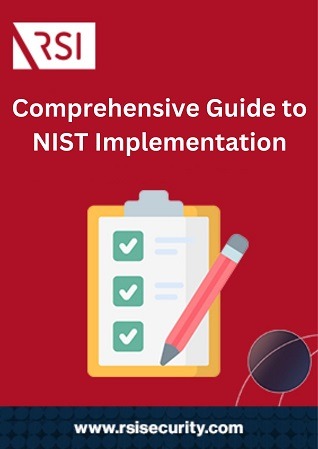The National Institute of Standards and Technology’s (NIST) Cybersecurity Framework (CSF) outlines the five elements of an organization’s cybersecurity strategy. These five elements include identification, protection, detection, response, and recovery. As such, the CSF also provides the perfect checklist for auditing your organization’s adherence to the NIST security operations center best practices.
What is a Security Operations Center?
Contrary to what the name may suggest, a security operation center (SOC) is not merely a control room where cybersecurity professionals monitor a company’s IT infrastructure. Rather, it’s a synthesis of operations, technologies, and best practices that work in conjunction to form a comprehensive cybersecurity strategy.
According to the SANS (SysAdmin, Audit, Network, and Security) Institute:
“A SOC is a combination of people, processes, and technology protecting the information systems of an organization through: proactive design and configuration, ongoing monitoring of system state, detection of unintended actions or undesirable state, and minimizing damage from unwanted effects.”
SOCs typically utilize security information and event management (SIEM) systems and intrusion detection and prevention systems (IDPS) to monitor and respond to incidents.
Download Our Comprehensive Guide to NIST Implementation
 |
SOC Personnel
The roles of SOC personnel typically break into tiers according to their involvement in an incident’s timeline and severity. The common roles and responsibilities for a SOC team are:
- Security Analyst (Tier One) – Responsible for vulnerabilities monitoring, triaging identified incidents, and escalating those that warrant it.
- Security Analyst (Tier Two) – In charge of investigating and responding to incidents, then executing response and recovery processes to remediate incidents’ impact.
- Threat Hunters (Tier Three) – Responsible for assessing IT security infrastructure according to the latest threat intelligence to determine unexpected or stealthy means of network entry.
- Manager (Tier Four) – Responsible for overseeing the entire team and reporting findings, action plans, and threat notifications to the organization’s CISO.
- Engineer/Architect – Works alongside other members on SOC teams, designing, developing, and maintaining security infrastructure.
Request a Free Consultation
Security Operations Center Audit Checklist—The NIST CSF
When evaluating your SOC’s processes and technology, you’ll want to compare audit results against the NIST CSF for best practices. The CSF offers general, voluntary guidance on cybersecurity and the best specifications and strategies for preventing, managing, and responding to threats. As such, it also provides the most widely applicable security operations center audit checklist.
In addition to the CSF, you’ll want to check any industry-specific or business activity-specific regulations that affect your cybersecurity efforts. Complying with HIPAA, PCI, and other frameworks may or may not overlap with the CSF’s guidance. Hence, it’s essential to map how your security strategies, operational processes, and technical specifications meet all of your organizations’ varying requirements.
Periodic SOC audits and gap assessments help to ensure that the best practices outlined in the CSF have been implemented and operate as intended. Gap assessments compare your organization’s cybersecurity against compliance frameworks to highlight the areas that fall short. While you can perform gap assessments internally, you may wish to seek help from third-party cybersecurity experts who specialize in evaluations, like RSI Security.

Understanding the NIST CSF
The NIST breaks the CSF down into five “Functions” subdivided into 23 “Categories.” With this breakdown, the CSF provides the perfect checklist for assessing your organization’s cybersecurity infrastructure and the execution of NIST security operations center responsibilities.
The CSF’s Functions and Categories are:
- Identification – This helps your organization understand and manage cybersecurity risks posed to your systems, people, assets, data, and capabilities. By creating a comprehensive picture of your risks, business contexts, and IT resources that support critical functions, you can prioritize and escalate appropriate threats faster. Identification’s Categories are:
- Establish a basic Asset Management program by identifying physical and software assets.
- Determine your organization’s business environments, supply chain role, and involvement among the U.S.’s 16 critical infrastructure sectors.
- Identify your organization’s established cybersecurity policies and cybersecurity-specific legal or regulatory requirements.
- Establish a basic Risk Assessment program according to asset vulnerabilities, threats to organizational resources, and risk response activities.
- Determine your organization’s risk management strategy and account for tolerances.
- Implement a strategy for managing supply chain risks that guides decision making according to priorities, constraints, tolerances, and assumptions.
- Protection – Safeguards must be put in place to ensure that critical infrastructure services remain operational and limit a cyberattack’s impact. Protection’s Categories include:
- Implement identity and access management to enforce optimal authentication and authorization restrictions for physical and remote access to IT environments.
- Provide staff with threat awareness and mitigation training.
- Set data security protections that are aligned with your risk strategy.
- Implement information protection processes and procedures to secure assets.
- Conduct ongoing maintenance to support organizational resources.
- Ensure systems’ and assets’ security and resilience adhere to all applicable frameworks and policies.
- Detection – Your organization must outline the proper actions to be taken when cybersecurity incidents occur. An effective strategy ensures that your SOC detects potential threats quickly to mitigate the chances of an incident evolving into a significant breach. Detection’s Categories are:
- Ensure that anomalies and events are detected and their threat categorized for the appropriate response.
- Install continuous security monitoring capabilities to assess implemented measures and monitor cyberthreats.
- Update processes according to the latest threat intelligence to determine new cyberattack indications.
- Response – This Function guides the appropriate activities your SOC team will undertake following incident detection. Response’s Categories are:
- Confirm that your SOC performs response planning processes.
- Maintain an open line of communication between all appropriate stakeholders and law enforcement.
- Analyze response effectiveness, recovery efforts, and incident impact.
- Perform mitigation activities to prevent a problem from intensifying.
- Implement improvements identified during previous detection and response actions to improve SOC capabilities.
- Recovery – As the final function within the NIST framework, Recovery focuses on identifying the necessary measures for restoring the capabilities or services negatively impacted by a cybersecurity event. SOC teams must restore normal operations as quickly as possible. Recovery’s Categories are:
- Ensure proper execution of your organization’s planned Recovery processes when restoring systems, assets, and access to services.
- Review existing strategies and current cyberthreat intelligence to implement new improvements.
- Coordinate all communications, internal and external, during and after incident recovery processes.

SOC Tools of the Trade
A SOC’s efficacy relies on up-to-date cyberthreat intelligence and scanning, monitoring, and testing tools to prepare for incidents. Security operations center best practices include preemptively addressing weak points to neutralize potential attacks before they occur, minimizing the number of incidents requiring an active response.
Penetration testing will simulate cyberattacks to determine potential entry methods and other vulnerabilities. Analyzing test results and gap assessments will help your SOC identify potential network security exploits and cybercriminal methods. Another security operations center best practice is to simulate your cyberattack response with tabletop incident exercises to assess and improve your SOC team’s knowledge of policies and processes.
Outsourcing Your SOC
Because running an internal SOC is expensive, labor-intensive, and requires particular expertise, most organizations seek to mitigate these costs by outsourcing some, if not all, of their SOC operations. Managed security services providers (MSSPs), such as RSI Security, offer security operations center services, including:
- Real-time threat monitoring and intelligence
- Incident response and recovery
- Threat and Vulnerability Management
- Compliance management
- Data protection
Whether you outsource or run an internal SOC, conducting regular audits and gap assessments regarding CSF adherence ensures that your IT environment is secure and your organization follows NIST security operations center best practices.
Building a Professional Security Operations Center
A security operations center is your primary defense against vulnerabilities and threats. But handling these various tasks internally can be costly and may go beyond your capabilities. It’s vital that you entrust outsourcing these critical activities to an established security operations center services provider like RSI Security.
RSI Security’s comprehensive suite of managed security services and expertise will help guide you through your implementation of NIST security operations center best practices.
Contact RSI Security today to get started!
